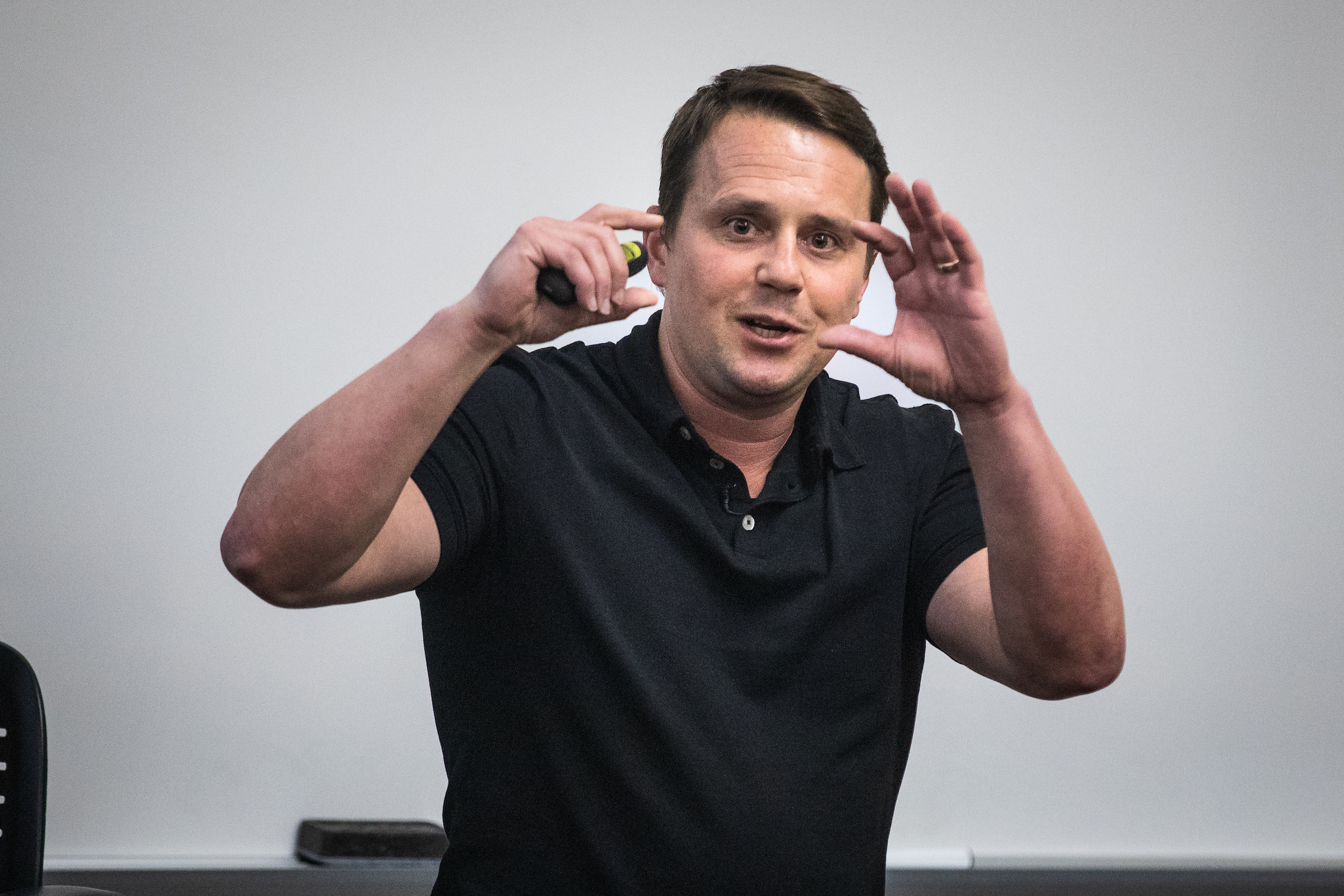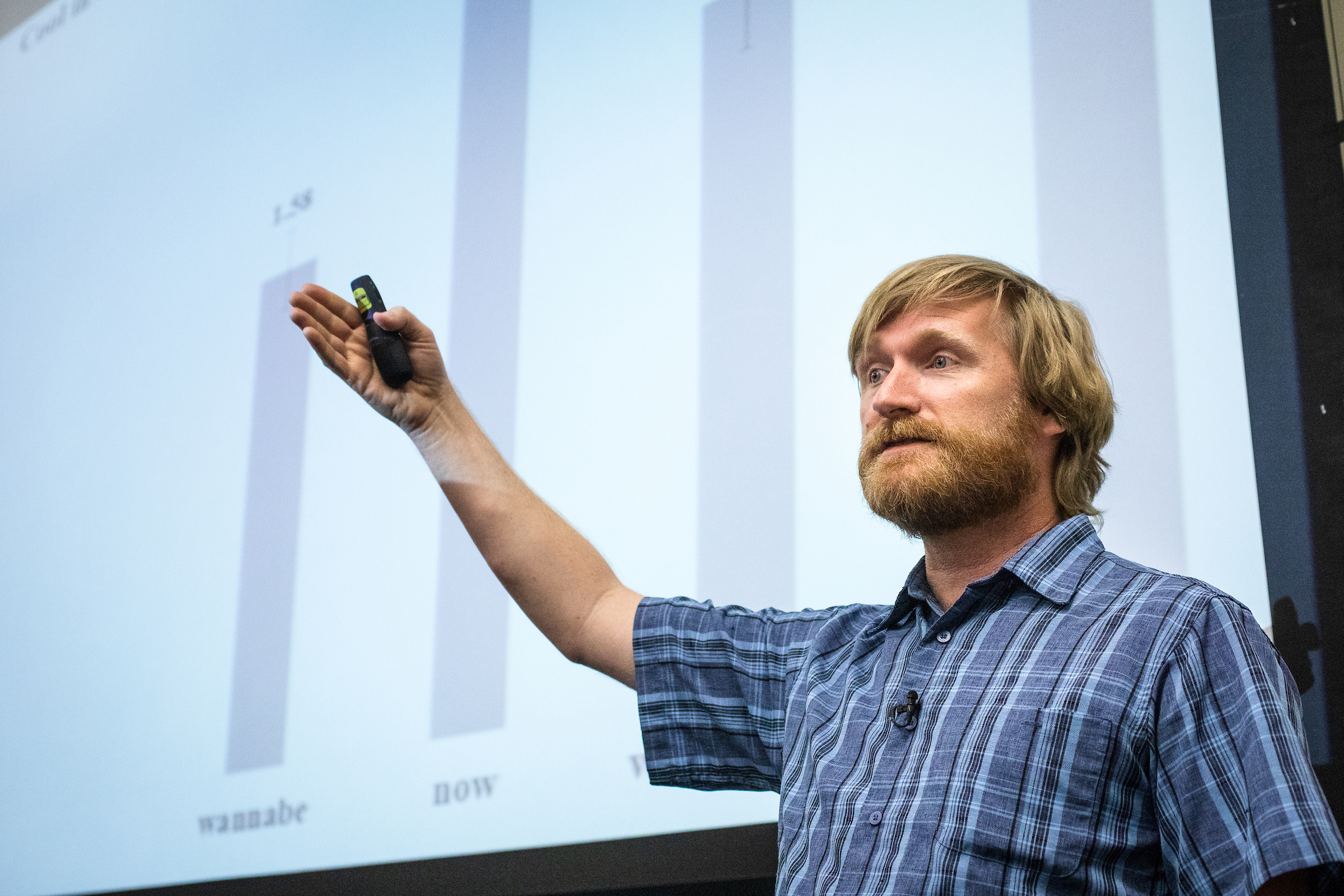Early results from youth survey find worrying trends on guns, drugs

Preliminary results from a survey of youths in Arizona show worrying trends concerning gun violence and drug use, according to a presentation at Arizona State University on Friday.
Every two years, about 60,000 eighth-, 10th- and 12th-graders across the state take the Arizona Youth Survey, answering dozens of questions about substance use, gang involvement, bullying, violence, texting while driving and other risky behaviors.
The 2018 survey is underway now, and the primary administrator is Dustin Pardini, an associate professor in the School of Criminology and Criminal Justice at ASU. About 27,000 responses have been recorded so far, with more coming in every day. Pardini discussed some preliminary results in a presentation of research at the downtown Phoenix campus of ASU.
A new question this year asks whether students have carried a handgun in the past 12 months. Across all three grade levels, about 7 percent responded that they had. Of those, about half said that they had threatened someone or shot at someone with a gun.
“You have over half the kids that are carrying using those guns in acts of violence against others,” Pardini said.
Dustin Pardini, an associate professor in the School of Criminology and Criminal Justice at ASU, is administering the Arizona Youth Survey this year. Photo by Charlie Leight/ASU Now
“The thing we are increasingly concerned about, with the school shootings taking place across the country, is carrying a gun to school, but most of the gun carriers are not doing it at school,” he said, noting that about 1.5 percent of the students said they had taken a gun to school in the previous year.
Another new question this year addressed whether students are vaping marijuana concentrates, such as hash oil, wax or “crumble,” which have higher levels of THC, the chemical compound in marijuana that creates the high.
“This is probably the largest sample in the country that assessed concentrate usePreliminary results show that for eighth-graders: 16 percent smoked, 13 percent used concentrate; 10th-graders: 31 percent smoked, 23 percent used concentrate; 12th-graders: 42 percent smoked, 30 percent used concentrate. among teenagers,” Pardini said. “And it’s an extremely common way of using marijuana at this point. The proportion of kids using concentration is pretty close to the proportion that is smoking marijuana.
“This is concerning to us because we know that higher THC levels can have negative effects, including subclinical psychotic symptoms and declines in IQ, according to some research,” he said.
The Arizona Youth Survey is eight pages long and the questions are very detailed, asking about frequency of use and attitudes toward using alcohol, cigarettes, electronic cigarettes, marijuana, hallucinogens, ecstasy, methamphetamines, steroids, cocaine, prescription pain relievers, inhalants, synthetic drugs and over-the-counter drugs, like cough syrup. Other questions concern witnessing or being the victim of violence or bullying, what students’ family life is like, their perceptions of safety and how much they like school.
Typically, about 50,000 students respond to the survey, which provides a huge data set, and Friday’s presentation included some research papers that resulted from the 2016 version:
Gary Sweeten, an associate professor in the School of Criminology and Criminal Justice at ASU, analyzed the Arizona Youth Survey data to track gang membership trends. Photo by Charlie Leight/ASU Now
Gang embeddedness: Gary Sweeten, an associate professor in the School of Criminology and Criminal Justice at ASU, analyzed the data to track gang membership and found that the Arizona results mirror national trends, with gang membership peaking around ages 14 or 15. One question asked whether being in a gang is “cool,” and those who said they were in a gang did not respond that it was. “It’s potentially because they’re not joining a gang to be cool. They’re joining a gang for protection,” Sweeten said.
Predicting arrests: Shi Yan, an assistant professor in the School of Criminology and Criminal Justice at ASU, used the data to create a new model of assessing risk factors that could more accurately predict which students will be arrested or suspended. His “random forest” model could mean a more strategic use of resources.
In the neighborhood: Cara Stevens, a senior research analyst at the Statistical Analysis Center of the Arizona Criminal Justice Commission, looked at answers to questions about neighborhoods and found that students who answered “no” to “I like my neighborhood” or “yes” to “I would like to leave my neighborhood” were more likely to use prescription drugs or alcohol.
Who is gambling: Catie Clark, director of the Statistical Analysis Center of the Arizona Criminal Justice Commission, found that the likelihood of gambling is greater for males, as well as students who had used cigarettes or marijuana. Interestingly, students who reported using cocaine, methamphetamine or inhalants were not more likely to report gambling behavior.
Pardini said that there are now 12 years’ worth of survey results that can be analyzed to track and create more effective programs.
“If a school gives an intervention to kids in the eighth grade, you could look two years later and see if 10th-graders’ risk factors have dropped,” he said.
He would like to see elementary school students taking the Arizona Youth Survey.
“If we want to do prevention, we need to go to the elementary schools," he said. "We’re talking about kids that are already using substances and already getting bullied.”



